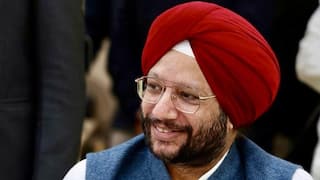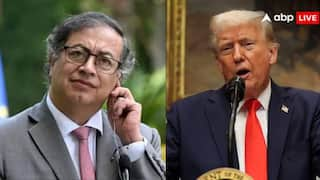RBI Governor Shaktikanta Das Launches UPI-Based Payment For Feature Phone Users | Check Details
In order to equip feature phone users in the country with the digital payment ecosystem, the Reserve Bank of India launches UPI123Pay and DigiSaathi on Tuesday

New Delhi: Now, those who don’t own a smartphone or internet connection will also be able to perform Unified Payments Interface (UPI) payments anymore. In order to equip feature phone users in the country with the digital payment ecosystem, Reserve Bank of India Governor Shaktikanta Das launched UPI123Pay on Tuesday.
He also launched 24x7 helpline for digital payments, called DigiSaathi.
Except scan and pay, UPI 123Pay will allow customers to use feature phones for almost all transactions. Feature phone users also don't need internet connection for transactions. Customers have to link their bank account with feature phones to use this facility.
Customers who stay in rural areas and cannot afford a smartphone can now use UPI on their feature phones. The RBI governor said, "This current decade will witness a transformative shift in digital payments ecosystem across the country." He also added that the central bank has announced several steps in the past three years to push digital transactions and lower cash transactions.
UPI payment platform, which was introduced in 2016, have grown multifold since then.
In his address, Das cautioned the users on the need to focus on cyber security. He said systems need to be prepared to face such risks.
“Watch out for the launch of UPI for feature phones - UPI123Pay and 24*7 helpline for digital payments - DigiSaathi by RBI Governor @DasShaktikanta at 12 noon on March 08, 2022," the central bank of India tweeted.
Watch out for the launch of UPI for feature phones - UPI123Pay and 24*7 helpline for digital payments - DigiSaathi by RBI Governor @DasShaktikanta at 12 noon on March 08, 2022
— ReserveBankOfIndia (@RBI) March 8, 2022
YouTube: https://t.co/lb5mhivRfd#rbitoday #rbigovernor #DPAW #UPI #digisaathi @UPI_NPCI
>ALSO READ: Russian Oil Import Ban: US Has Taken No Decision, Germany Raises Fear Over Energy Risk
Unified Payments Interface (UPI) has become a popular mode of payment through smartphones. In fact, Nepal has become the first country outside of India to adopt real-time UPI payments.
It is the single largest retail payments systems in the country in terms of volume of transactions, showcasing its wide acceptance.
In December, RBI governor Shaktikanta Das announced the launch of digital payment systems for feature phones.
What are feature phones?
Unlike smartphones, feature phones are serve basic functions like making calls and sending a text message.
In order to extend the reach of digital transactions, RBI governor Shaktikanta Das said it is important to bring feature phone users into mainstream digital payments.
Das announced the launch of a UPI-based payment system for feature phones on November 8, 2021."In order to further deepen digital payments and make them more inclusive, ease transactions for consumers, facilitate greater participation of retail customers in various segments of the financial markets and enhance the capacity of service providers, it is proposed to launch UPI-based payment products for feature phone users leveraging on the Reserve Bank’s regulatory Sandbox on Retail Payments," said Das.
What it means for feature phone users?
The UPI payment facility is only restricted to smartphone users with internet connections. However, the new mode of digital payments will help individual to make direct payments to others through UPI via feature phones as well.
This process will make the small-value transactions simpler than ever “through a mechanism of ‘on-device’ wallet in UPI applications."
“India has a large mobile phone consumer base of about 118 crore mobile users (TRAI, October 2021)1 of which about 74 crore (Statista, July 2021) have smart phones indicating that there is a significant number of feature phone users in the country. Feature phone users have limited access to innovative payment products," said the central bank.
Related Video
Union Budget 2025: Arvind Kejriwal lists the shortcomings of the Modi government's budget | ABP News | AAP
Top Headlines





































